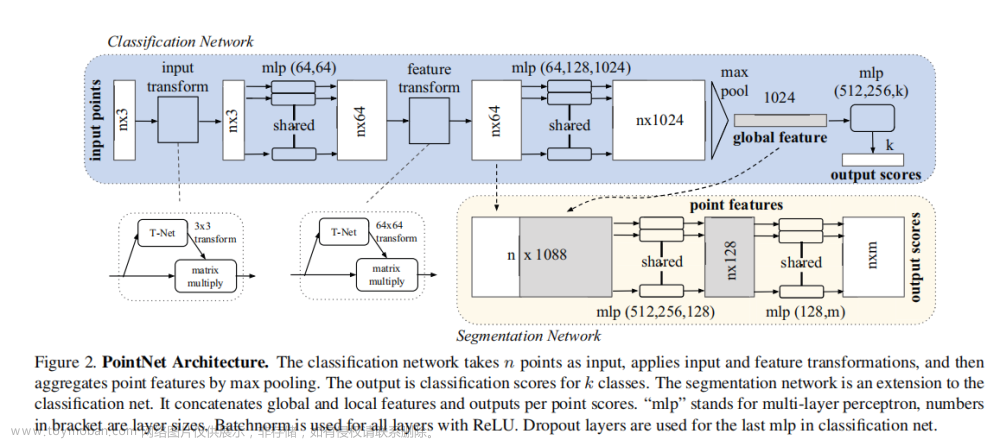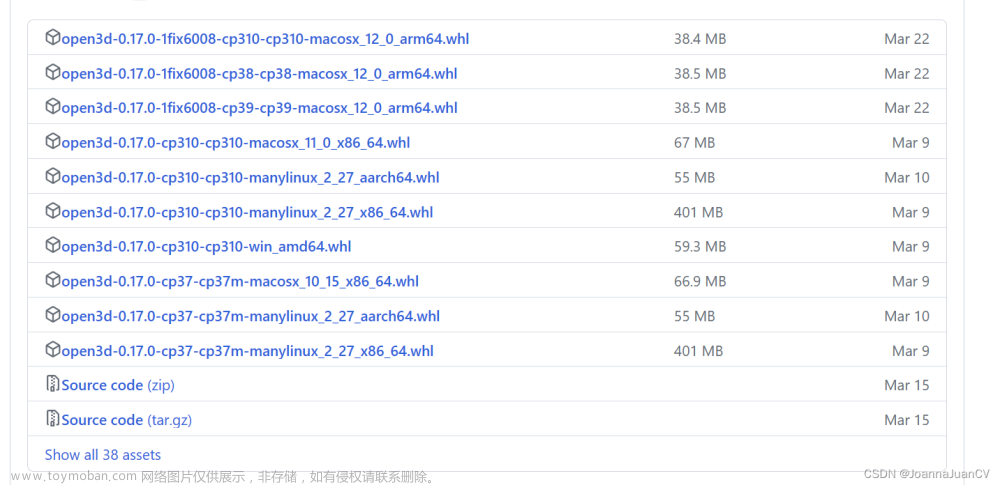以前以为rviz是用OpenGL渲染绘图,那么获取图像里像素点对应的真实3D坐标是采用的OpenGL里提供的API实现的,结果一看代码还真不是这样,rviz也就渲染用了OpenGL,其他都是自己实现的,图像界面的实现完全是遵循MVC设计模式自己实现的透视投影和坐标转换等所有相关类。获取点云图像里所选择的点云点的3D坐标相关的代码是这里:文章来源:https://www.toymoban.com/news/detail-857533.html
src/rviz/selection/selection_manager.cpp:
bool SelectionManager::getPatchDepthImage(Ogre::Viewport* viewport,
int x,
int y,
unsigned width,
unsigned height,
std::vector<float>& depth_vector)
{
unsigned int num_pixels = width * height;
depth_vector.reserve(num_pixels);
setDepthTextureSize(width, height);
M_CollisionObjectToSelectionHandler::iterator handler_it = objects_.begin();
M_CollisionObjectToSelectionHandler::iterator handler_end = objects_.end();
for (; handler_it != handler_end; ++handler_it)
{
handler_it->second->preRenderPass(0);
}
if (render(viewport, depth_render_texture_, x, y, x + width, y + height, depth_pixel_box_, "Depth",
depth_texture_width_, depth_texture_height_))
{
uint8_t* data_ptr = (uint8_t*)depth_pixel_box_.data;
for (uint32_t pixel = 0; pixel < num_pixels; ++pixel)
{
uint8_t a = data_ptr[4 * pixel];
uint8_t b = data_ptr[4 * pixel + 1];
uint8_t c = data_ptr[4 * pixel + 2];
int int_depth = (c << 16) | (b << 8) | a;
float normalized_depth = ((float)int_depth) / (float)0xffffff;
depth_vector.push_back(normalized_depth * camera_->getFarClipDistance());
}
}
else
{
ROS_WARN("Failed to render depth patch\n");
return false;
}
handler_it = objects_.begin();
handler_end = objects_.end();
for (; handler_it != handler_end; ++handler_it)
{
handler_it->second->postRenderPass(0);
}
return true;
}
bool SelectionManager::get3DPatch(Ogre::Viewport* viewport,
int x,
int y,
unsigned width,
unsigned height,
bool skip_missing,
std::vector<Ogre::Vector3>& result_points)
{
boost::recursive_mutex::scoped_lock lock(global_mutex_);
ROS_DEBUG("SelectionManager.get3DPatch()");
std::vector<float> depth_vector;
if (!getPatchDepthImage(viewport, x, y, width, height, depth_vector))
return false;
unsigned int pixel_counter = 0;
Ogre::Matrix4 projection = camera_->getProjectionMatrix();
float depth;
for (unsigned y_iter = 0; y_iter < height; ++y_iter)
for (unsigned x_iter = 0; x_iter < width; ++x_iter)
{
depth = depth_vector[pixel_counter];
// Deal with missing or invalid points
if ((depth > camera_->getFarClipDistance()) || (depth == 0))
{
++pixel_counter;
if (!skip_missing)
{
result_points.push_back(Ogre::Vector3(NAN, NAN, NAN));
}
continue;
}
Ogre::Vector3 result_point;
// We want to shoot rays through the center of pixels, not the corners,
// so add .5 pixels to the x and y coordinate to get to the center
// instead of the top left of the pixel.
Ogre::Real screenx = float(x_iter + .5) / float(width);
Ogre::Real screeny = float(y_iter + .5) / float(height);
if (projection[3][3] == 0.0) // If this is a perspective projection
{
// get world-space ray from camera & mouse coord
Ogre::Ray vp_ray = camera_->getCameraToViewportRay(screenx, screeny);
// transform ray direction back into camera coords
Ogre::Vector3 dir_cam = camera_->getDerivedOrientation().Inverse() * vp_ray.getDirection();
// normalize, so dir_cam.z == -depth
dir_cam = dir_cam / dir_cam.z * depth * -1;
// compute 3d point from camera origin and direction*/
result_point = camera_->getDerivedPosition() + camera_->getDerivedOrientation() * dir_cam;
}
else // else this must be an orthographic projection.
{
// For orthographic projection, getCameraToViewportRay() does
// the right thing for us, and the above math does not work.
Ogre::Ray ray;
camera_->getCameraToViewportRay(screenx, screeny, &ray);
result_point = ray.getPoint(depth);
}
result_points.push_back(result_point);
++pixel_counter;
}
return !result_points.empty();
}
bool SelectionManager::get3DPoint(Ogre::Viewport* viewport, int x, int y, Ogre::Vector3& result_point)
{
ROS_DEBUG("SelectionManager.get3DPoint()");
std::vector<Ogre::Vector3> result_points_temp;
bool success = get3DPatch(viewport, x, y, 1, 1, true, result_points_temp);
if (result_points_temp.empty())
{
// return result_point unmodified if get point fails.
return false;
}
result_point = result_points_temp[0];
return success;
}
世界3D坐标是用的射线法计算出来。SelectionManager::get3DPoint()被rviz里多个地方调用,凡是UI界面上需要查看点的坐标地方都是调用它。文章来源地址https://www.toymoban.com/news/detail-857533.html
到了这里,关于rviz是如何获取图像里选择的点云的3D坐标的的文章就介绍完了。如果您还想了解更多内容,请在右上角搜索TOY模板网以前的文章或继续浏览下面的相关文章,希望大家以后多多支持TOY模板网!




![[论文阅读]PillarNeXt——基于LiDAR点云的3D目标检测网络设计](https://imgs.yssmx.com/Uploads/2024/02/715798-1.png)






